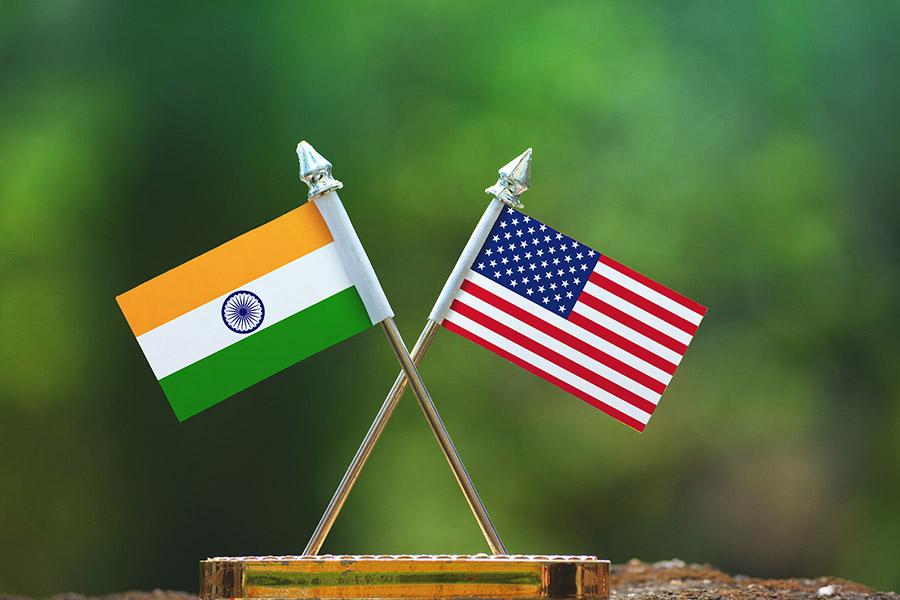Creating a US-India security advantage in the Indo-Pacific
The Asia Pacific is a highly dynamic and geographical region with a plethora of political, strategic, economic and socio-cultural factors at play
India today is finally coming into its own and now surging ahead with the self-confidence that comes with growing capabilities. By expanding our trade with the US significantly and broadening our engagement, most importantly in the Asia-Pacific, the world is acknowledging India's status as a rising and emerging economic superpower.
The Asia Pacific is a highly dynamic and geographical region with a plethora of political, strategic, economic and socio-cultural factors at play. Keeping this in mind, it would be imperative to have a far more constructive regional approach, which is grounded in a balance of power and mutual compromise. Considering this, India needs to step forward and take a more proactive approach, when it comes to shaping the political, economic, social environment in the region. In not doing so, India could lose out on a wonderful opportunity to project itself as a growing strategic power in the region, thereby affecting our geopolitical interests.
As we move forward, and India takes on a more proactive role in regional stability, it would only be productive for the US to place a higher priority on helping India achieve its potential. The way ahead would be to jointly invest in a greater coordinated capacity and contribute to a strong security environment in the Asia-Pacific and beyond.
According to the AMCHAM – KPMG in India annual report ‘The India-US dynamic – prospering together’, an increased participation from both countries across a broad spectrum of sectors such as aerospace and defence, infrastructure, energy, and so on is imperative. This is key to building a strong framework for significant growth in the India – US partnership.
Talking of working across sectors, India today is viewed as a major defence partner of the US. This can be attributed to the fact that we have finalised critical defence agreements such as the Logistics Exchange Memorandum of Agreement (LEMAO), Defence Technology Trade Initiative (DTTI), and so on with them. The US-India Defence Technology and Partnership Act is expected to lead to greater industry collaboration on defence co-production and co-development, thereby helping with facilitating the export of goods and technologies for projects, programmes and joint ventures between both nations. This is also expected to enable information sharing, interoperability and technology transfers within both countries. All of this augurs well for us as American companies today are keen to leverage the cost arbitrage component design and manufacture costs in India by seeking opportunities for private partnerships in India’s defence market.
As stated in the AMCHAM–KPMG in India annual report ‘The India-US dynamic – prospering together’, both the countries have a $126 billion two-way trading relationship. Our shared vision of the Asia-Pacific region’s strategic outlook would not only bolster our bilateral defence interests, but what would also be imperative is that the US has the foresight to cultivate a strong partnership with a prosperous, confident, and India, a natural ally, basis our shared democratic values.
Another key area where both, India and the US can collaborate are promoting a market-driven blue economy. This will essentially lay down the basis for a broad framework for growth and prosperity in the Asia-Pacific region, which is home to bountiful hydrocarbon, mineral and food resources, as well as mushrooming coastal populations. Given the US’s expertise in maritime architecture, it can support India in creating a robust regional architecture in the area of stability, economic freedom, growth and maritime security.
Another aspect which merits particular attention in the India–US partnership is digital connectivity. Using digital as a tool for economic development and empowerment by both the nations can be the conduit to connect close to three billion emerging users in other developing countries in the Indo-Pacific region as well as neighbouring Africa. As digital norms are institutionalised, whether relevant to data flows and ecommerce, or related to critical infrastructure, defence and public services—it offers opportunity for India and the US to build and subsequently provide a feasible working model relationship for the digital economy. The goal should be to create a strong framework that responds to developing-country imperatives such as affordable access, local content generation and cybersecurity.
To sum it up, the strategic imperative for a deeper cooperation between the two countries is indisputable. Our list of common challenges and shared opportunities is long. The need of the hour is to strengthen the dialogue, invest more time in regional integration, strengthen regional forums, explore additional multilateral opportunities for engagement and pursue areas where both India and the US can create long-term peace and prosperity for all.
The author is an Office Managing Partner, West, at KPMG in India.
The thoughts and opinions shared here are of the author.
Check out our end of season subscription discounts with a Moneycontrol pro subscription absolutely free. Use code EOSO2021. Click here for details.
